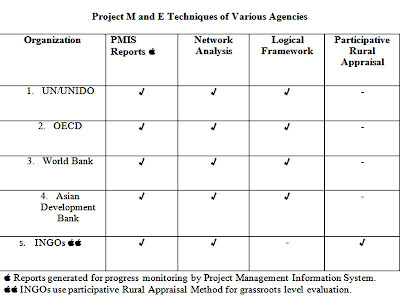Control is a managerial process. It is interrelated with planning. Planning provides standards for control. Control measures actual performance and compares it with standards to identify deviations. Deviations are analyzed to take corrective actions.
Control can be of the following types:
Control is a cyclical process. It involves the following steps:
1. Setting Standards (What should be done?)
Planning sets standards fro performance. Standards are the starting point of control. They are target or yardstick of performance.
The second step in control is measurement of actual performance within a given period. It is a continuous on-going process to get feedback.
- Control is a continuous process. To be effective, it should give attention to critical control points or benchmarks where deviations adversely affect the attainment of targets.
Control can be of the following types:
 |
| The Process of Control |
- Pre-control (Feed-forward control): It is inputs-based. It is initiated before the start of the activity. It anticipates problems in advance and takes preventive corrective actions. Examples are specifications for quality control, capital budgeting methods, acquisition of right human resources.
- Concurrent Control (Yes/No Control): It is transformation based. It is initiated during the implementation of the activity. It consists of actions to ensure that operations are being conducted according to plans. Problems are corrected as they arise. Example is quality control from process to process.
- Post Control (Feedback Control): It is output based. It is initiated after the completion of the activity. It is based on feedback of performance results. Example is financial analysis.
Control is a cyclical process. It involves the following steps:
1. Setting Standards (What should be done?)
Planning sets standards fro performance. Standards are the starting point of control. They are target or yardstick of performance.
- Standards can be in terms of quality, quantity, costs, income and time. Standard costs, standard operating time, sales goals per salespersone, quality standards, kilometers per liter are example of standards.
- Standards should be clearly understandable. They should be reasonable. Employees should see them fair and attainable.
The second step in control is measurement of actual performance within a given period. It is a continuous on-going process to get feedback.
- Internal reports relating to quantity, quality, costs, income, time etc., provide information about actual performance.
The third step in control is comparison of actual performance with standards. Performance can be equal to, be higher, or be lower than standards.
The performance is evaluated in terms of deviations. Corrective actions are taken. The actions can be:
- The magnitude of deviation is identified. The causes and incidence of deviation are analyzed.
- The responsibility for deviation is located.
The performance is evaluated in terms of deviations. Corrective actions are taken. The actions can be:
- Do nothing: If the performance deviations are withing allowable tolerance, status quo is maintained.
- Correct deviations: Actions are taken to correct the deviations. They can be more training, better raw materials, improvements in design, greater motivation etc.
- Change Standards: Standards are revised to make the appropriate and realistic.
- Control should focus on critical control points. They are of areas where deviations from standards will cause the greatest damage to project. Corrective actions can be most effectively applied to such critical control points.

